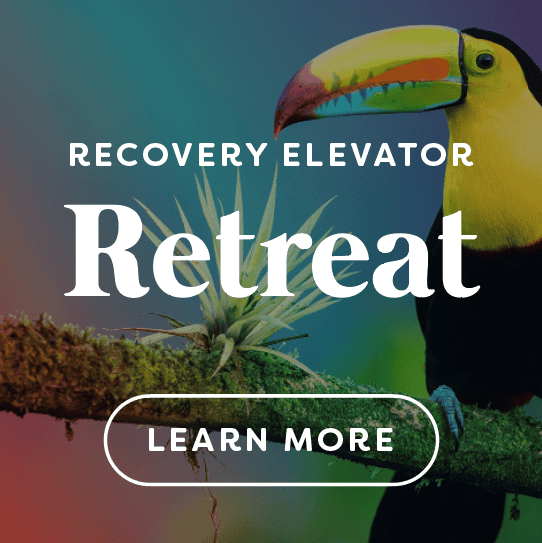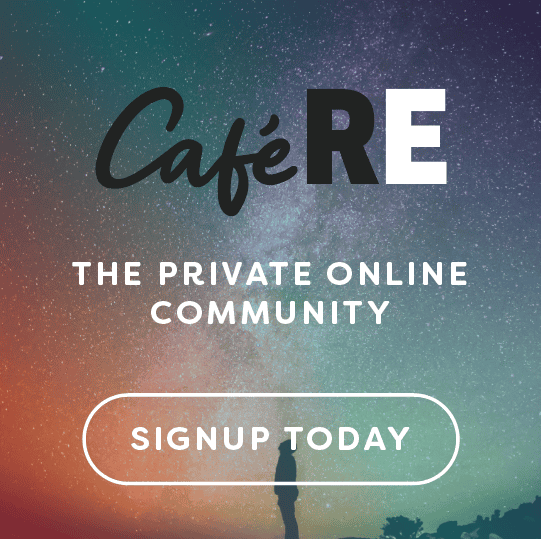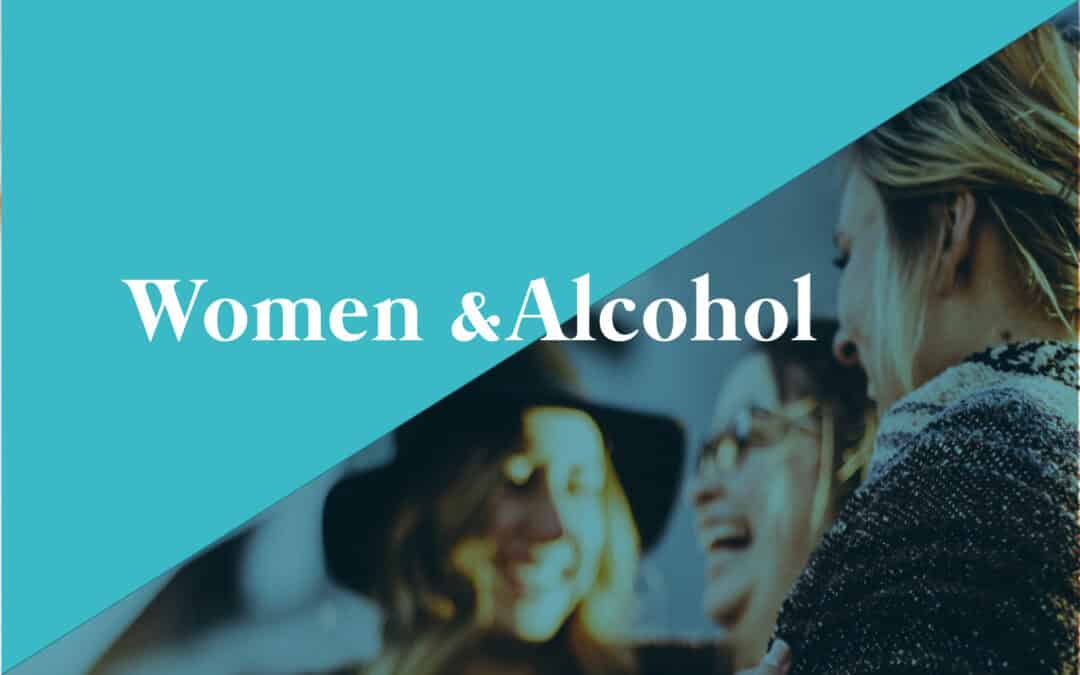
by RE Helper | Feb 15, 2024 | Alcohol Free, Blog, Early Sobriety, Resources, Womens health
Today’s blog entry is from Alisa. Alisa has been a member of Café RE since July 2023. She recently took part in our Recovery Elevator REstore 2024 course. She is an active and supportive member of her Café RE GO group!
Women and Alcohol
By: Alisa (Café RE GO)
I’d heard the anecdote that women had started to surpass men with their drinking habits. Then in 2023, the WHO announced that no amount of alcohol was safe for consumption. This was all lining up with what Holly Whitaker said in her book Quit Like A Woman. So I sought to dig into this and better understand what was behind these trends in women’s drinking.
The history of women and alcohol is an interesting one.
It zigzagged from a movement to ban alcohol (predominantly to stop men from plundering the family savings at the bar) to the pursuit of a seat at the bar. Ironically, Prohibition gave rise to secret bars (speakeasies). Where women were able to redefine long standing gender roles by smoking, drinking, and having fun in public. Though women had imbibed before this time, they had rarely done so in public because as you can imagine, most drinking establishments were male-only. “So for young women, speakeasies stirred a spirit of rebellion”.
In order to understand what happened to the alcohol industry, it’s useful to examine what happened with cigarettes.
Big Tobacco used several strategies to advertise to women. For example, the industry prompted a feminine ideal of thinness presenting the cigarette as a way to achieve this ideal. They taught Hollywood actors how to smoke in films to make smoking look sophisticated. They also hired a PR giant. The PR giant then hired women to smoke in a parade to manufacture a connection between smoking and liberation. He coined the term “Torches of Freedom” to encourage women to smoke as a symbol of emancipation and an act of challenging social taboos.
Big Alcohol* rode in on the coattails of the tobacco industry.
They used similar tactics to market alcohol to women by appealing to their thirst for equality and independence. By making tobacco products custom fit to women (think Virginia Slims) and hiring women to smoke while engaging in the women’s liberation activities, they spread the idea of smoking as empowerment. Similarly, the alcohol industry created pink drinks, colorful labels, overpowering fruit flavors, and low-calorie options to target women by capitalizing on gender stereotypes. I find these strategies incredibly ironic since initially the alcohol industry used women’s bodies (and implicitly the promise of sex) to sell alcohol to men.
The advent of social media made things even easier for Big Alcohol
The advent of social media made things even easier for Big Alcohol as algorithms specifically targeted individual demographics. Now we receive customized ad feeds based on our past behaviors. Us social media users also became their advertisers by spreading trends like “Rose All Day.” Culturally, alcohol (and especially wine) became a symbol of stressed-out women and moms with memes featuring “Mommy juice.”
Sadly, these common marketing messages exploit women’s desire for friendship, relaxation, and empowerment. Having a glass of wine has become a way that women and moms feel like they are taking care of themselves. As Sarah Hepola put it in her drinking memoir Blackout, “Wine and confession. Wine and sisterhood. Wine had become our social glue, the mechanism of our bonding. We needed the wine to shut out the jackhammers of our own perfectionism and unlock the secrets we kept within”.
While many of us use alcohol as a social lubricant, we may also use it to “unwind” in private.
While many of us use alcohol as a social lubricant, we may also use it to “unwind” in private. Concepts like ‘Wine o’clock’ offered permission to drink when we felt like it and linked alcohol to a method for navigating daily life stress. Absolutely none of us are to be blamed for falling for this and using alcohol in these ways. As the addiction and trauma specialist Gabor Mate says, alcohol use is a response to pain and suffering. Alcohol has long been a culturally accepted and condoned way of dealing with stress. In fact, alcohol marketing to both women and men ramped up during one of the most stressful global times in recent history: the pandemic. Here is an example of a marketing slogan by Retail Drinks Australia:
“If we want people to stay at home, if we want them in a good state of mental health with a conviviality that encourages them to adhere to social isolation, we’ve got to ensure they have access to the social norms such as enjoying a drink.” Danica Keric and Julia Stafford from the Cancer Council Western Australia’s Alcohol Programs Team said in response, “There was a deliberate move by the alcohol industry to frame alcohol as an essential product including for our mental health, during the pandemic”.
If you’re not appalled by now at how the alcohol industry operates, consider how the same things are happening with our food supply.
Like alcohol and cancer, the food industry plays a significant role in the metabolic disease rates in our country by lacing food with addictive chemicals like sugar and then obscuring the dangers of these additives. “The system works. Not for the best interests of health but for the best interests of those who are profiting off the system” Michael Greger, author of How Not To Die.
My favorite Quit Lit writer and recovery program pioneer, Holly Whitaker, summarizes:
“We read labels, we shun gluten, dairy, processed foods, and refined sugars. We buy organic, we use natural sunscreen and beauty products. We worry about fluoride in our water, smog in our air, hydrogenated oils in our food, and we debate whether plastic bottles are safe to drink from.
We replace toxic cleaning products with Mrs. Myers and homemade vinegar concoctions. We do yoga, we run, we SoulCycle and Fitbit, we go paleo and keto, we juice, we cleanse. We do coffee enemas and steam our yonis, and drink clay and charcoal, and shoot up vitamins, and sit in infrared foil boxes, and hire naturopaths, and shamans, and functional doctors, and we take nootropics and we stress about our telomeres. These are all real words.
We are hyper-vigilant about everything we put into our body, everything we do to our body, and we are proud of this. We Instagram how proud we are of this, and we follow Goop and Well+Good, and we drop 40 bucks on an exercise class because there are healing crystals on the floor.
The global wellness economy is estimated to be worth $4 trillion. $4 TRILLION DOLLARS. We are on an endless and expensive quest for wellness and vitality and youth. And we drink fucking rocket fuel”.
While women started off forbidden from drinking in public, women are now drinking as much as men if not more. But what most women don’t know is that our rates of addiction and alcohol-related deaths are surpassing theirs. It turns out that due to our physiology, women start to have alcohol-related problems sooner and at lower consumption rates than our male counterparts. This occurs because of how we process alcohol. Because we have lower total body water content, blood alcohol levels are higher. The first stage of alcohol metabolism is slowed which results in more alcohol being absorbed into the bloodstream. Unfortunately, this leads to greater generation of liver-toxic products like acetaldehyde. Thus, imbibing alcohol increases the vulnerability of women to the risk of alcohol-related illnesses such as liver disease and cancer.
In my fantasy worldview, everyone is ethical and people who have the authority to powerfully impact public health make the “right” (aka moral) decisions. Sadly, this isn’t true. The way we can take our power back is to know the truth and make decisions based on these facts. When I started treating sobriety as an act of rebellion, something new clicked for me. I hope it can for you too.
*Big Alcohol refers to the lobbying front group for twelve of the largest multinational alcohol corporations.
**More from Recovery Elevator referencing Big Alcohol**
RE Podcast Episode 407
Blog – A Messgage to Big Alcohol
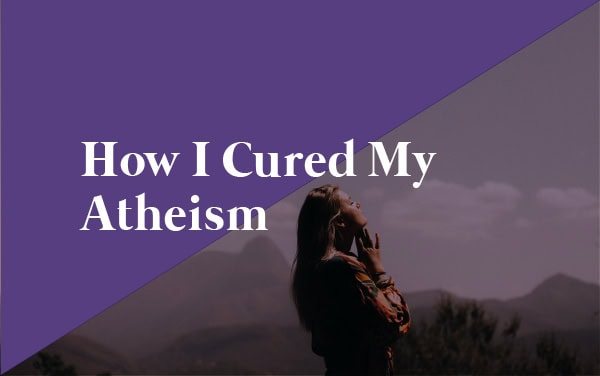
by RE Helper | Jan 15, 2024 | Alcohol Free, Blog, Expectations, Helpful Tips, Resources, Uncategorized
Today’s blog entry is from Bobbie Malatesta. Bobbie has been a member of Café RE since February 2020. Bobbie just celebrated 4 years alcohol free and is a big source of support to her Café RE UP group!
How I Cured My Atheism
By: Bobbie Malatesta (Café RE UP)
Recently, someone shared a beautiful acronym that I wish I had earlier in my spirituality journey. Before I get into that, please allow me to explain a little of my history in this department.
In my family, we had the Italian and Polish grandparents that were traditionally Catholic. My parents didn’t make us be Catholic except for when we went to weddings and funerals of course. I was given the option to choose what religion I wanted to be.
At age 10, I decided to get baptized a Baptist. I was to stand in a sunken tub in the church and get dunked by the clergy and that would be that, right? Well, not exactly. I begged the man baptizing me to hold my nose when he dunked me. Guess what? He didn’t!!
And so began my atheism. How could I trust this God if his person couldn’t even help me with my minor little request? Staying true to my disbelief and anger was easy as my life unfolded. Trauma, tragedy, death after death, abandonment, and all the other bull-oney that life has to offer seemed to start and never stop in my life. How could there possibly be a “”God” if all these bad things kept happening to me?
And so my life went.
Once I joined 12 Step and had to memorize the Serenity Prayer, it got a bit more challenging. Any time my GA crew wanted me to kick off the prayer, they expected me to say that “G” word but I didn’t want to talk to him. I still didn’t believe in him. On account of my big mouth and the fact that one of the principles in the program is that you don’t have to believe in the G word per seh, we found a compromise. Whenever I started the prayer, I addressed the Universe. Eventually, some of my fellows would start with Universe too, in support of me.
Things were going along just great until I got to Step 11. “ Sought through prayer and mediation…. conscious contact with GOD….” Oh Sugar! It was time to revisit this whole God concept for me. Long story short, I started going to church, meditating and doing the work so I could “graduate” Step 11.
One of my favorite parts of doing this “work” was being in recovery communities like Café RE. Working on Recovery Dharma, Sober travel trips with beautiful peers, learning from Patrick and appreciating the landscape of Bozeman all contributed to what is defined as spirituality to me now. I can see God now in the essence of people, sunsets and sunrises and music. The key is it doesn’t have to be labeled as god, universe or any other word in particular.
The end result was that for me, I now believed in a God, and I still choose to call her or him, Universe.
Now, I have embraced and want to share GUS!
GUS was there all along and I heard about him when I was supposed to, recently at a conference.
GUS stands for:
God
Universe
Source/ Spirit
I am believer that there is no one right way for anything, including our own spirituality. This is not meant an insult to anyone’s faith or choices, but to offer a solution to anyone who might be stuck on this premise like I was.
Either way, GUS got us, no matter what you call her/ him/ it.
Thanks for letting me share!
With Love & gratitude,
Bobbie
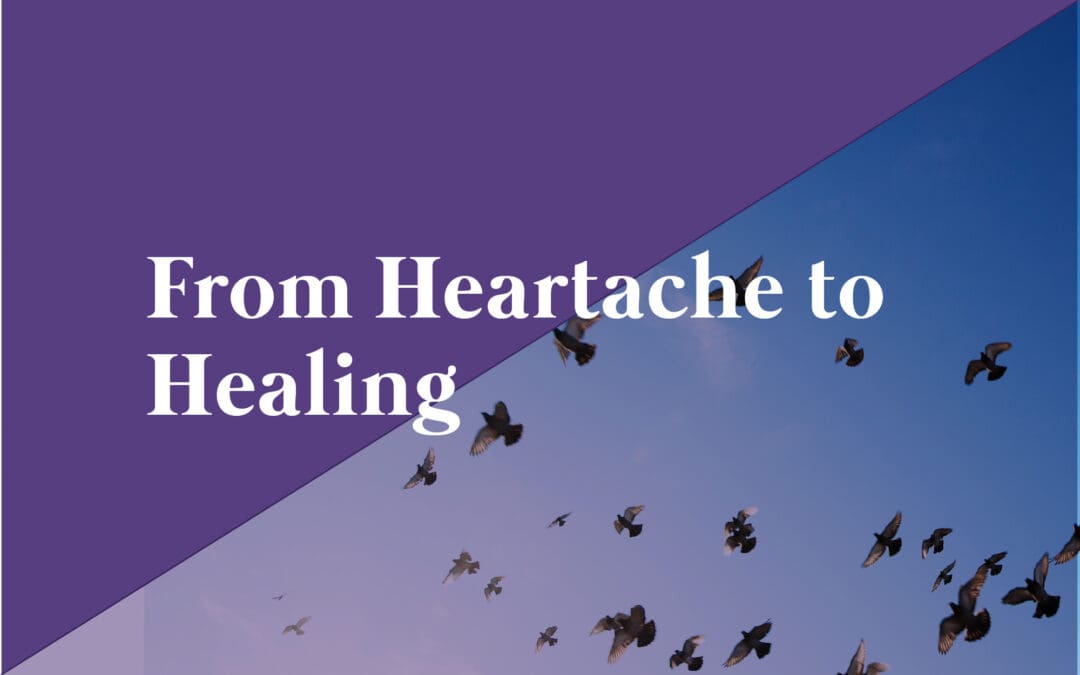
by RE Helper | Dec 15, 2023 | Alcohol Free, Blog, Early Sobriety, The first Year, Uncategorized
Today’s blog entry is from Adam Whitman. Adam has been a member of Café RE since September 2022. Adam has been alcohol free since January 1, 2023 and is very active within his Café RE OG community.
From Heartache to Healing
By: Adam Whitman (Café RE OG)
February 1st, 2023
My first month of sobriety is written in the books. 
The pink cloud is in full view and you better believe I’m right up in it. I take that back. I’m above it. Look at me soar. I’ve actually done it. I quit drinking. And you know, it isn’t that hard. Might I dare say it’s easy? I don’t even want to drink. It’s gross. I actually think it’s gross now.
I can’t hold back. I’m going to say it.
I am a freaking badass.
August 1st, 2023
My seventh month of sobriety is written in the books.
My negative thinking is out of control. Insecurities are running rampant. I no longer relate to my circle of friends. “I don’t like the new Adam” they say as I watch them slowly slip away.
And I’ve gotten fatter. What? Fatter? How the f**k did that happen?
I’m in the midst of the worst people pleasing flareup of my life. My marriage is hanging on by a thread. The woman who I’ve shared 22 years of my life with, who I’ve raised two beautiful children with, is tired. We’re both tired. And I’m not sure we can hold on much longer.
I can’t hold back. I’m going to say it.
I am a freaking mess.
August 5th, 2023
Today I set sail to the RE Bozeman Retreat. I’m driving. Yes, you heard me right. This Texas boy is driving to Montana–3,200 miles round trip. Let’s do this.
But wait a second. Was I really talking about splitting assets with my wife yesterday? Were we really talking about how we would manage custody of our children? What the hell is going on?
Maybe I shouldn’t go. But right now, Bozeman seems to be the only answer. As to what the question is, I have no idea. One thing remains certain.
My life is a wreck.
Trinidad Lake State Park
 Eight hours to Trinidad, Colorado complete.
Eight hours to Trinidad, Colorado complete.
The tent is up and I’m resting easy in my hammock. Look at me go. I can do this alone. I don’t need anyone. In fact, being alone is better. I am one strong dude. Back and forth my hammock swings between two trees until the sun goes down and the darkness sets in.
I’m lonely.
And afraid.
Did she really say she would leave me?
Quitting drinking uncovered some shit, didn’t it? I can’t get these thoughts out of my head. Who imagined it would be a good idea to venture out into the world alone in a tent for three days? Why am I such a mess? Will I ever get better? Will I be able to stop thinking about her? About me? About all of the shame and regret?
Sun, you can come up now.
 August 6th, 2023
August 6th, 2023
Glendo State Park
Six hours to Glendo, Wyoming complete.
My tent is pitched. It appears as if I’m the only person in this park. Rain starts to fall.
The negative thoughts continue to flood my mind. In addition, the solitude is proving that I really annoy myself. What does that even mean? I annoy myself? Is this what it’s like for others to be around me?
The thoughts continue to relentlessly take over. But within the constant bombardment of negative thinking a new softly spoken response starts to emerge.
Tell the thoughts to stop.
But I can’t.
Yes, you can. Quiet them. Just try it.
Adam, you’ve hurt people. Shh… Adam, you’re not doing enough. Shh… Adam, you’re worthless. Shh… Adam, you’re a failure. Shh… Over and over, like a broken record. Shh…. Enough.
Did drinking cause this madness? No. It hid it though, buried it deep. And now it’s here crawling out of the dark threatening me, whispering lies. I keep telling it to shut the hell up. But will it listen?
Persistence remains.
Time will tell.
August 7th, 2023
Grandview RV Park
Five hours to Hardin, Montana complete.
I chose an RV park this time, laundry and a hot shower, and people too. It’s been awhile. They distract me. This is good. The sunset is beautiful. I order a pizza and rest.
Tomorrow I will be in Bozeman. There I will finally be in the physical presence of my Recovery Elevator friend Jim. We initially met at the REstore Dry January course, the course where my journey towards enlightenment started, where the ups and downs of sobriety began. And Jim held onto me throughout.
If you know Jim that shouldn’t surprise you.
August 8th, 2023
Days Inn Bozeman
Four hours to Bozeman Montana complete.
It’s my first night out of a tent and in a motel. Jim is staying here too. I’m nervous.
After a couple of hours, we meet for dinner. During our introduction a firm handshake occurs followed by an awkward jump as if we both stuck our fingers in a light socket. It’s the ‘should I go in for a hug but then suddenly decide against it’ jump. Solid handshake though Mr. Jim.
I’m glad to finally meet you.
You’ve been a dear friend.
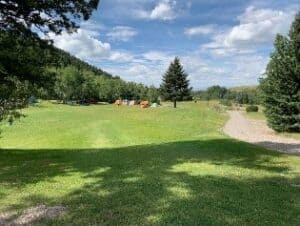 August 9th, 2023
August 9th, 2023
Thirty minutes to Big Sky, Montana complete.
No turning back now.
Jim and I arrive at the retreat. I unpack my gear and set up my home for the next four days. It’s beautiful out here. Once my tent is ready I walk to the registration area. It quickly becomes apparent that many of these retreat goers already know each other.
What if they don’t like me? I am just a middle-aged dude with issues who somehow made his way far from home. Ain’t nothing special about me. Heck, I don’t even know if I like me.
The voices persist.
Maybe I’ll just stand here and pretend I’m feeling confident. Keep your hands out of your pockets Adam. Be cool man. Be cool.
But It didn’t take long before it happened. One, after another, after another approached me. “Where are you from?” they would ask. “You drove here?” “That’s so cool!” “Do you have a family?” “What are their names?”
My God they are so kind. Are all of them like this? Soon I realized that yes, they are. I wondered why. By the end of our time together I found the answer.
It’s because we all share in each other’s unavoidable suffering.
I used to think I could drown that suffering with booze, repress it somehow, maybe even eliminate it, alone. But as you might have guessed it never worked. It only made it worse.
Instead, in the presence of others working their recovery in the stunning landscape of Big Sky Montana, I dared to expose my suffering. I didn’t fight it, I didn’t hide it, I didn’t drown it, I shared it. And they shared theirs with me. And it was beautiful.
Connection is the opposite of addiction and I get it now.
I am here.
I am whole.
Finally.
August 23rd, 2023
My reentry home was purposely slow. I took my 
new-found freedom into the Utah desert first, then back up
into western Colorado to meet my Recovery Elevator
accountability partner, and finally back to the unbearable
Texas heat.
Everything’s changed.
 I missed her.
I missed her.
And come to find out, she missed me.
Today was our first day of marriage counseling.
I’m hopeful.
The negative voices, they’re still there. But they’re quieting, fading. Why? Because I have recovery tools to work with now.
And I have friends.
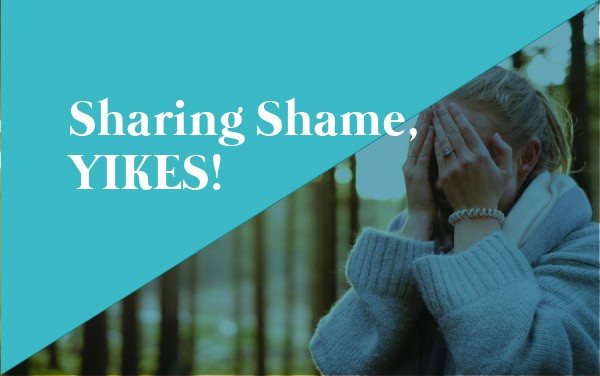
by RE Helper | Nov 15, 2023 | Alcohol Free, Blog, Early Sobriety, Expectations, Helpful Tips, The first Year, Uncategorized
Today’s blog entry is from Dustin Wade, who has been a member of Café RE since March 2021. Dustin has been alcohol free since January 30, 2020. He is very active within his Café RE UP group and on our community chats.
Towards the end my drinking progressed to the point that I started drinking as soon as I woke up. I knew this was taking me down a dark path.
This behavior started when I was newly divorced, single and could do whatever I wanted. Why not start drinking first thing in the morning? Fast forward, now in a relationship (with my now new bride!) I would have an hour or two to sneak some in before she woke up, and the sneaky behavior began!
My drinking continued at work, filling various water bottles with wine, beer, and vodka to drink in my office. Going out to lunch, and sitting at the bar to drink more. I would keep the buzz going until I went home. Then I would try and hide the fact that I had been drinking all day. Oh, then there were days I would lie about working late and hit the bar again on the way home.
My car got towed one time and I lied about having to ‘work even later’ so I could get it out of the impound lot. With the drinking all day, that meant I did a lot drinking while driving, and never thought twice about it! While at the same time judging others who did it too.
Day after day, the shame ran deep.
Shame kept me drinking for far too long, and my drinking routine caused some significant weight gain. It embarrassed me. I was always the skinny kid growing up, so I felt like everyone was judging me. Growing up my family didn’t open up and talk about our struggles. This contributed to me letting the shame of drinking build up inside. Eventually, all the lying and drinking all day caught up with me and I had to face the music. When my fiancé found some hidden alcohol I had to share what had been building up inside for so long. Unable to hide behind a lie, I had to tell her how much I was drinking. Finally talking about this big secret I’d kept for so long I felt some burden being lifted. It was the scariest thing I’ve ever had to do!
I had always known that day was going to come. Part of me wanted it to happen this way, and part of me wanted to go out with a big rock bottom. A few days later, I stepped into an IOP (intensive outpatient program) and shared my shame of abusing alcohol with total strangers. Once I did it was like something reached into me and lifted this huge burden buried deep inside. I wept. It was so emotional hearing the words that I had a problem with alcohol come out of my mouth.
I quickly learned how powerful sharing shame could be.
Sharing shame can come in many forms, and you may want to know who your audience is before sharing. It might be with loved ones, close friends, AA meetings, your sponsor, therapists, rehab programs or publicly, like on the RE Podcast. It might be a post in a private Café RE group or a share on a Café RE chat.
A big share for me was doing the Café RE member spotlight, where I shared my story with the group.
Along the way, I was listening to other shares, and with everyone, there was something that resonated with me, and comforting to know I wasn’t alone. For this reason, I continue to share, because you never know who may need to hear what you have to say. What I realize now, is that I have shared shame is safe places, and I knew the audience. I think this is important to note.
There is a lot out there on sharing shame. Here is an excerpt from psyche.co website about sharing shame: ‘Sharing about our shame can help us realize that others will accept us despite self-perceived flaws. Further, sharing often provides a space where others open up and actually relate to our experiences, which decreases the sense of aloneness and can increase our trust in opening up to others.’
This last part of the quote really hits home, the decrease in a sense of aloneness has been huge for me, and bright spot in my recovery. Likewise, my increased trust in opening up to others has allowed me grow and learn. There was certainly no growth when I just bottled things up inside, with no outlet other than drinking.
I will leave you with this quote by author Ann Voskamp, ‘Shame dies when stories are told in safe places.’
Have you shared your shame?
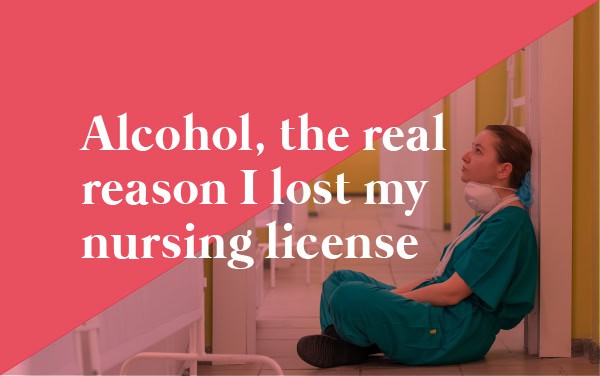
by RE Helper | Oct 15, 2023 | Alcohol Free, Blog, Early Sobriety, Expectations, Nursing, Uncategorized
Today’s blog entry is from Paulette Vantrease, who has been a member of Café RE since July 2023. Paulette has been alcohol free since March 22, 2023 and is active within her Café RE OG community.
“I blamed covid for leaving nursing, but alcohol addiction forced me when I lost my license.”
I stood on a stage about to give a speech to a few hundred festival attendees, I hated speaking in front of a crowd; I still do. But the topic was about something I knew personally, and I had lived it for many months. I felt a sense of comfort and pride in what I was going to say. Writing the speech and practicing it out loud was cathartic. I hoped I could sincerely convey all the emotions I felt up to and on that day. My head was clear, my heart full, and I was sober for several weeks that day.
On September 11, 2021 I was asked by an acquaintance to speak at a festival. Asked to speak about my experience as a nurse in the emergency department during the pandemic. The worst of covid had passed by then though fear and caution remained throughout our community and much of the country. My focus was on what I saw and lived through in the ER, dealing with non-believers (including a few of my own siblings back home), and the raw emotions felt during and still to that day whenever I thought of those difficult shifts in the hospital.
What I omitted in that speech was my struggle with alcohol throughout the entire span of the pandemic.
As ER nurses…
As ER nurses we deal with people every shift who are at their very worst: mildly or critically ill or injured, in psychiatric crisis, actively dying, and just about everything else you can imagine. We are hardcore adrenaline junkies who thrive on the chaos the department gives us. We willingly work in an environment no one wants to be, most certainly the patients.
The article “Alcoholism and Medical Professionals” states that 10-12% of healthcare professionals will develop a substance abuse disorder during their careers, including 1 in 5 nurses. It also states that the numbers are likely even higher due to vast underreporting. Drinking is the norm after a shift, most certainly after a particularly difficult one. Us night shift workers would often leave the hospital in the morning to go have “breakfast” at a local restaurant that served alcohol after 8:00 am. Food was often only an option.
To say alcoholism is rampant among healthcare workers, especially those in critical care areas, is an understatement. Alcohol is an easy outlet to numb the mind and body after desperately trying to save a young car crash victim only to watch him ultimately slip through your fingers. For me personally, drinking became my daily therapy session.
My first successful attempt at sobriety began in late May 2018.
I had been drinking daily and much to my shame and guilt even before work to feel somewhat normal. As William Porter describes in his book “Alcohol Explained,” our brains are essentially hijacked by alcohol and eventually we need to drink in order to simply function normally. It had got to the point where unless I drank my anxiety was unmanageable. I would begin to withdraw from the effects of alcohol. And eventually withdraw I did. Hard.
As a nurse I took care of detoxing patients and knew all too well how dangerous it could be. So, on a trip out of town with a dear friend that May afternoon the symptoms began on the car ride and though I was completely in denial, I could not get to a hospital fast enough. It scared me shitless. In the ER as my blood pressure read 200s over 100s and my heart rate 180+, I admitted to the doctor that I had been on a very long bender and stopped cold turkey a few days prior. When he ordered 2 mg of Ativan, I believe the relief on my face was visible to everyone in the room, and as it entered my veins the calming effect was almost immediate.
I could not deny any longer what was happening.
The phrase “scared straight” entered my mind and stayed there for a very long time. Looking back on and remembering the physical symptoms of withdrawal kept me sober for over 20 months. In the hospital I was diagnosed with cardiomyopathy, had a cardiac catheterization, and put on a regimen of medications for my heart, blood pressure, and lingering withdrawal symptoms. I entered an outpatient program and went to my very first AA meeting. One would think that all of this would have kept me sober for the rest of my life. But sheer determination without any plan in place only lasts so long.
Complacency in sobriety is like a bomb waiting to go off, and mine was ticking away the hours. For months I had been planning a dream vacation to Hawaii. I was set to go in early 2020. By then I had stopped going to AA blaming it on work constraints and subconsciously knew that I would drink there. The memory of detoxing had faded and the trip of a lifetime by myself was meant to be epic. The relapse there was epic as well. Queue explosion.
When I returned from Hawaii covid had begun to make waves as an up-and-coming new deadly virus. I had reached out to an old AA friend and somehow got back on track into sobriety. It didn’t last long. Covid hit with full force along with my drinking. I had countless attempts at sobriety throughout the pandemic however I simply could not sustain any stretches for long. It was a very dark time period for so many people including those of us trying to get and stay sober. Looking back, it is a blur of dying patients, daily chaos, uncertainty, and alcohol to numb it all.
In the summer of 2021 I was introduced to an online community called, “The Luckiest Club”. By then I had given up on AA but knew I needed something, anything to help me get sober. The spiral down to daily drinking had its grasp on me and I was completely powerless. TLC was like a breath of fresh air for me. I had heard of different types of recovery programs such as SMART recovery, Sober Sis, Recovery Dharma, and the like. But this was unique, and I immediately fell in love with the forum. I attended the online zoom meetings, joined subgroups that interested me and began to raise my hand and speak in meetings, which I never did in AA. I was sober again and felt incredible.
During the speech I gave that September day in 2021 all the emotions and memories of covid came crashing back. A state politician was there listening to me and stopped me as I was leaving to thank me for my service. He said you could hear a pin drop while I was on the stage which at a music festival was quite the feat. Several other attendees thanked me, shook my hand, and even hugged me. In hindsight I knew I should have reached out to someone, anyone from TLC or AA or my friend who drove me to the hospital back in 2018. Instead, I ended up at the liquor store. I got obliterated at home. The old wounds were ripped open, raw, and I wanted to eliminate the pain. STAT.
The rest of 2021 and 2022 was a continuous cycle of drinking. I was depressed. My drinking made my depression worse. I tried numerous times to quit and even had a few stretches of sobriety interspersed. By then I had lost my nursing job and my license due to alcohol and was floundering with what to do with my life. In spite of admitted to a psychiatric hospital a couple of times for suicidal ideation the drink had me in its grasp. If there was a rock bottom, I think I hit it more than once.
I took my last drink on March 22, 2023. The same day, I was admitted to the psychiatric hospital. I didn’t have a job. I was living with my son drinking away the days, foolishly thinking I was cleverly hiding it from the world. Upon my release I rejoined TLC, attended as many meetings there as I could, and immersed myself in reading and re-reading books such as “Quit Like a Woman” by Holly Whitaker, “Alcohol Explained” by William Porter, “This Naked Mind” by Annie Grace and several others. I recently began listening to podcasts and joined Recovery Elevator as well. I now listen to several a day. Paul Churchill’s interviews on the Recovery Elevator Podcast are my new daily therapy. I place more tools in my sobriety toolbox as I discover them.
Today, October 15, 2023, I am 207 days sober, and it is the longest stretch since 2020. I have found community and fellowship in TLC and Café RE. I have reached out to other members and met them in person. We text or talk on the phone, or message each other on the forum. I have a therapist who specializes in addiction who helps to guide me along in this journey. What the future holds or if I will remain sober, I do not know. I am unsure if I will, or even can, return to nursing. As cliché as it sounds, I take one day at a time. Everything feels right though, as if the universe finally put everything in place, and it feels amazing. It IS amazing.
Peace, Love, & Joy
Paulette
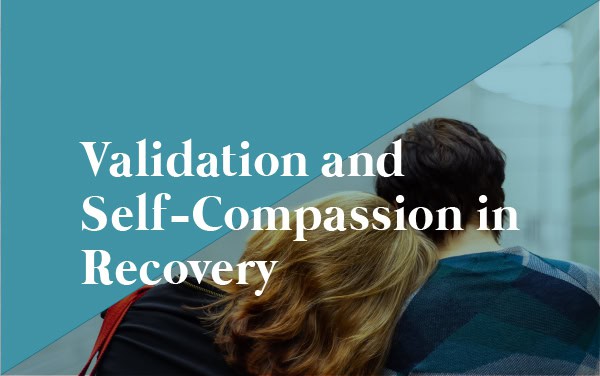
by RE Helper | Sep 15, 2023 | Alcohol Free, Blog, Early Sobriety, Healing, Helpful Tips, The first Year
Today’s blog entry is from Amanda McLean, who has been a member of Café RE since November 2019. Amanda has been alcohol free since March 26, 2019 and is very active within her Café RE GO community.
“Another day one, I’m such a loser.”
“I’ve ruined everything.”
“I’ll never get sobriety to stick.”
In my journey with alcohol abuse and recovery, these are just a few common mantras that run through my mind. I am someone who chronically struggles with self-judgment and negative self-talk. I know that my inner critic can be harsh and unforgiving. Since our thoughts drive our emotions, this unrelenting internal talk leads to painful feelings including anxiety, sadness, and low self-esteem. For many people, this self-hatred inner monologue and the associated feelings can lead to relapse or other forms of damaging behaviors. In my personal recovery journey, I have learned that being kind and supportive to myself during times of suffering is critical in maintaining my sobriety in recovery.
Avoidance is the Enemy
As Paul states in Recovery Elevator Episode 274 – I Feel Your Pain “In order to shift stagnant energy inside of us, we have to talk about our emotions.” Avoiding our thoughts and feelings never ends the way that we hope it will. And experts agree that one of the contributing factors to addiction is avoidance. As a person in recovery, I am guilty of minimizing, invalidating, and negating my feelings. But the more we avoid distress or attempt to suppress it, the worse it becomes. The more energy we use to push emotions like anxiety or anger away, the more powerfully those emotions come back toward us.
Another disadvantage of avoidance is that our bodies interpret avoidance as proof of danger, and this signals our internal alarm system. When my internal alarm system is activated, I often crave something to soothe my nervous system. Historically, I used and abused alcohol to calm my painful emotions. Although this solution proved to be immediate, it came with long term undesirable consequences including more painful emotions and negative self-talk. And thus, the cycle continued.
Start with Validation
Rather than avoiding negative self-talk and painful feelings that we would rather not face, we need to make a shift. We need to remember that the thought and the feeling are not the enemy. We need to remind ourselves that our thoughts and feelings are allowed to be here. We can tolerate discomfort. This starts with noticing the thought and/or the feeling and then providing validation.
Validation is useful for addressing any uncomfortable thought or feeling. It starts with acknowledging or labeling the feeling. For example, “I feel like I fail at everything, and this feels rough” or “I feel like I can’t do anything right and my entire body is tense” or “My chest feels tight and I feel so anxious”.
Once we acknowledge what we are feeling, we can then tell ourselves why it makes sense that we feel this way. In other words, tell yourself the story about why it makes sense that you feel the way that you feel. For example, “It makes sense that this feels rough because I worked a long day and now I am cooking dinner for my family while my kids argue”, or “It makes sense that I feel like I can’t do anything right and I am tense because my boss just snapped at me”, or “It makes sense that I am feeling anxious because this is my daughter’s first day at her new school and I am scared she won’t make friends”.
Self-Compassion
I know that feeling. That feeling of shame. When I was abusing alcohol, I didn’t want anyone else to know the things I had done. This is exactly when we need self-compassion. Self-compassion reminds me that I made a mistake but that does not mean that I am fundamentally a bad person. I can separate my worth as a person from my behavior.
When I fail to validate and hold my feelings, when I shame myself, I cannot learn from my mistakes. Shaming myself through self-judgement and self-criticism shuts down the learning receptors in the brain. Shame freezes a person. Self-compassion allows me to acknowledge and validate my thoughts and feelings, commit to not making the mistake again, and then forgive myself.
Dr. Kristin Neff, a pioneer in the field of self-compassion research, states that self-compassion is acting toward yourself the way you would act toward a cherished friend when you are having a difficult time, when you fail, or when you notice something that you don’t like about yourself. When something goes wrong or we have a difficult moment, avoiding or fighting against the suffering in that moment will only increase our anxiety, distress, and self-criticism. Self-compassion is a method for soothing or comforting our nervous system.
The 3 steps of Self-Compassion
When I was at the height of my alcohol abuse, waking up each morning feeling like a failure, the most common self-criticism that I heard in my head was, “I am such a loser”. More often than not, self-criticism caused me significant distress which led me to soothe my system with alcohol. In recovery, I have learned the value of self-compassion: giving myself kindness, care, and support.
Self-compassion involves three steps. First, I must hold the pain of my mistakes. This takes a lot of courage because I must acknowledge the pain I have caused myself and others. Second, I remember that pain and suffering are a part of being human and therefore other people have felt this way as well. I am not alone. Third, I must be kind to myself. Self-kindness means that I treat myself with sympathy, warmth, and patience.
Practicing these three steps may sound like, “I drank again and I was not present for my children and my husband. Other people struggle with repeated mistakes, and I am not the only person who has felt and experienced this pain. I have been through a lot this year and quitting alcohol is hard. AND I can do hard things.” From that space of openheartedness, I can do everything I can to commit to doing it differently in the future. This allows me to soothe my nervous system without using or abusing a harmful substance.
***By Amanda McLean; Café RE Go Group





 Eight hours to Trinidad, Colorado complete.
Eight hours to Trinidad, Colorado complete.  August 6th, 2023
August 6th, 2023
 August 9th, 2023
August 9th, 2023
 I missed her.
I missed her.


